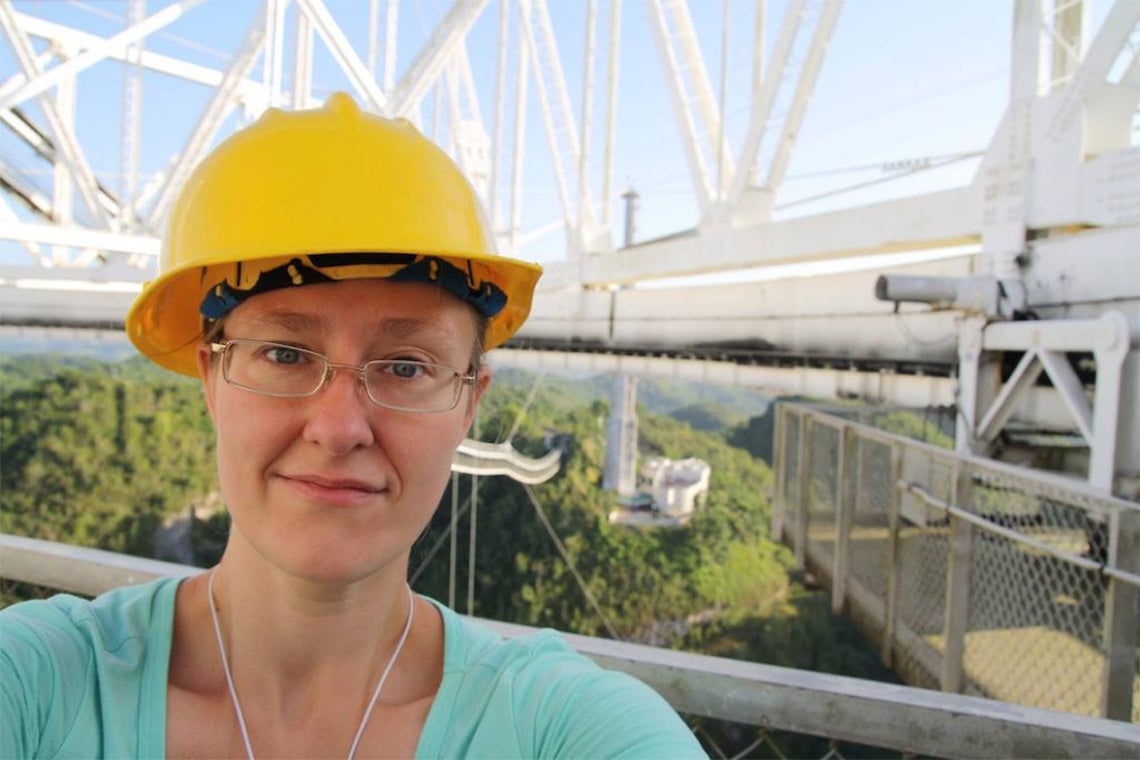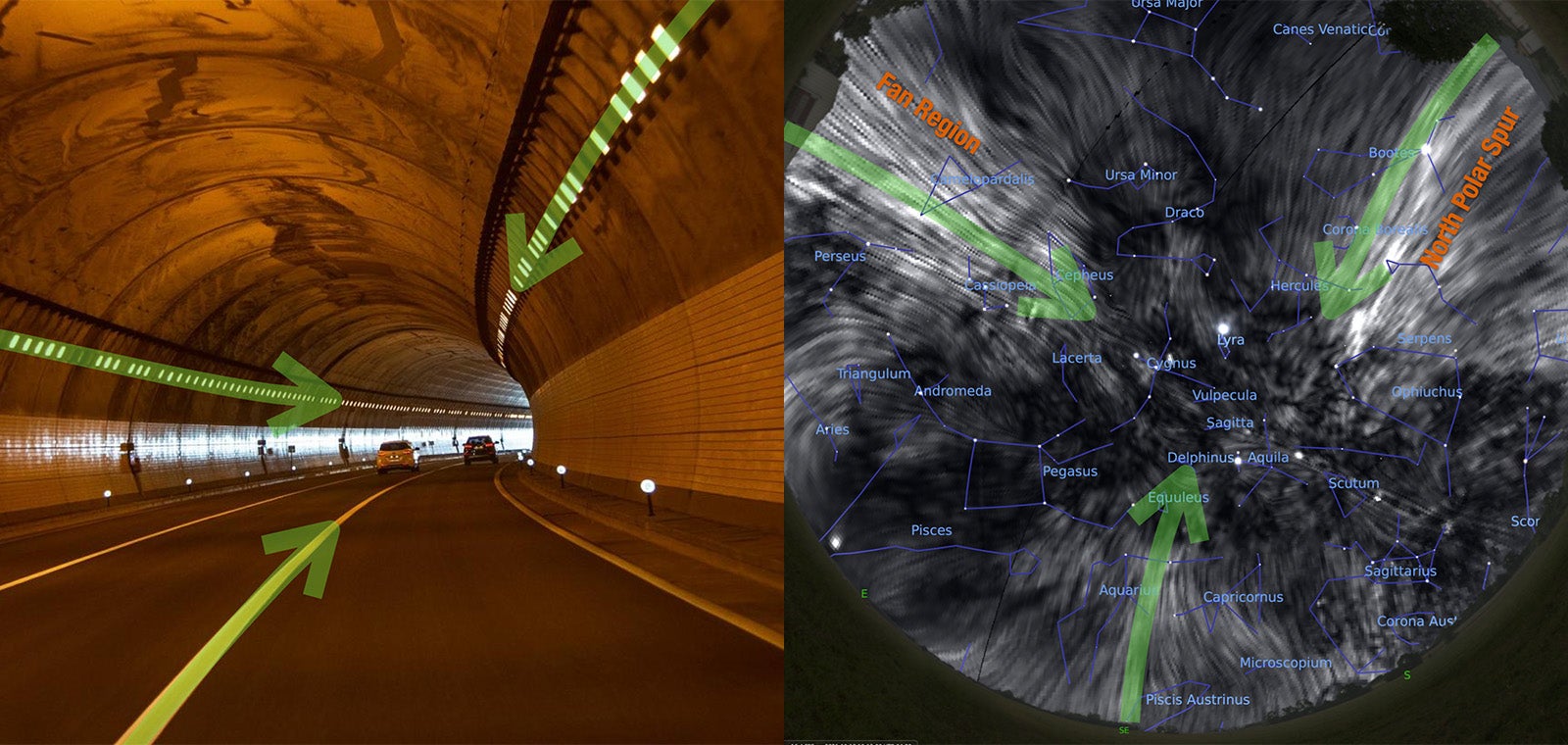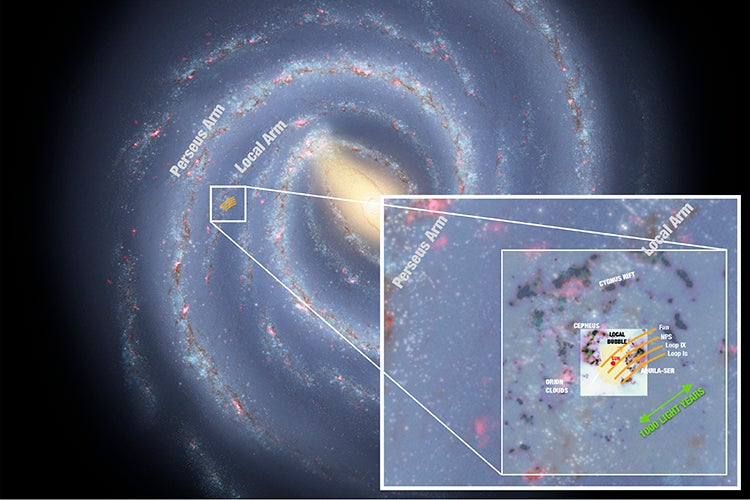
Jennifer West, a researcher at U of T's Dunlap Institute for Astronomy & Astrophysics, says two magnetic structures seen on opposite sides of the sky form what looks like a tunnel around the solar system (photo courtesy of Jennifer West)
A University of Toronto astronomer’s research suggests the solar system is surrounded by a magnetic tunnel that can be seen in radio waves.
Jennifer West, a research associate at the Dunlap Institute for Astronomy & Astrophysics, is making a scientific case that two bright structures seen on opposite sides of the sky – previously considered to be separate – are actually connected and are made of rope-like filaments. The connection forms what looks like a tunnel around our solar system.
The data results of West’s research have been published in the Astrophysical Journal.
“If we were to look up in the sky,” says West, “we would see this tunnel-like structure in just about every direction we looked – that is, if we had eyes that could see radio light.”
Called “the North Polar Spur” and “the Fan Region,” astronomers have known about these two structures for decades, West says. But most scientific explanations have focused on them individually. West and her colleagues, by contrast, believe they are the first astronomers to connect them as a unit.
Made up of charged particles and a magnetic field, the structures are shaped like long ropes, and are located about 350 light-years away from us – and are about 1,000 light-years long.
“That’s the equivalent distance of travelling between Toronto and Vancouver two trillion times,” West says.

Left: A curving tunnel, with lines formed by the tunnel lights and road lane markers, forms a similar geometry to the proposed model of the North Polar Spur and Fan Region (photo by Pixabay/ illustration by Jennifer West). Right: The sky as it would appear in radio polarized waves (image by Dominion Radio Astrophysical Observatory/Villa Elisa telescope/ESA/Planck Collaboration/Stellarium/Jennifer West)
West has been thinking about these features on and off for 15 years – ever since she first saw a map of the radio sky. More recently, she built a computer model that calculated what the radio sky would look like from Earth as she varied the shape and location of the long ropes. The model allowed West to “build” the structure around us, and showed her what the sky would look like through our telescopes. It was this new perspective that helped her to match the model to the data.
“A few years ago, one of our co-authors, Tom Landecker, told me about a paper from 1965 – from the early days of radio astronomy,” West says. “Based on the crude data available at this time, the authors [Mathewson and Milne], speculated that these polarized radio signals could arise from our view of the Local Arm of the galaxy, from inside it.
“That paper inspired me to develop this idea and tie my model to the vastly better data that our telescopes give us today.”

Illustrated map of Milky Way Galaxy shown with the position and size of proposed filaments. Inset shows a more detailed view of the Local environments, and the position of Local Bubble and various nearby dust clouds (image by NASA/JPL-Caltech/R. Hurt/SSC/Caltech with annotations by Jennifer West)
West uses the Earth’s map as an example. The North pole is on the top and the equator is through the middle – unless you re-draw the map from a different perspective. The same is true for the map of our galaxy. “Most astronomers look at a map with the North pole of the galaxy up and the galactic centre in the middle,” West explains. “An important part that inspired this idea was to remake that map with a different point in the middle.”
“This is extremely clever work,” says Bryan Gaensler, a professor at the Dunlap Institute and an author of the publication. “When Jennifer first pitched this to me, I thought it was too ‘out-there’ to be a possible explanation. But she was ultimately able to convince me. Now, I’m excited to see how the rest of the astronomy community reacts.”
An expert in magnetism in galaxies and the interstellar medium, West looks forward to the more possible discoveries connected to this research.
“Magnetic fields don’t exist in isolation,” she says. “They all must to connect to each other. So, a next step is to better understand how this local magnetic field connects both to the larger-scale galactic magnetic field, and also to the smaller scale magnetic fields of our sun and Earth.”
In the meantime, West agrees that the new “tunnel” model not only brings new insight to the science community, but also a ground-breaking concept for the rest of us.
“I think it’s just awesome to imagine that these structures are everywhere whenever we look up into the night sky.”
No comments:
Post a Comment